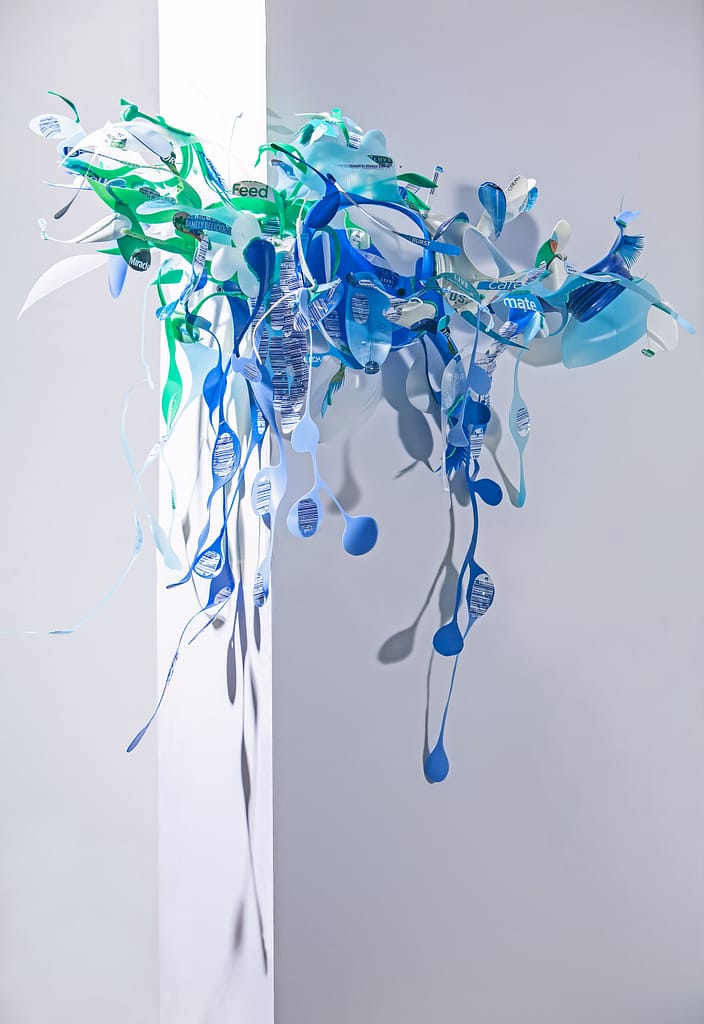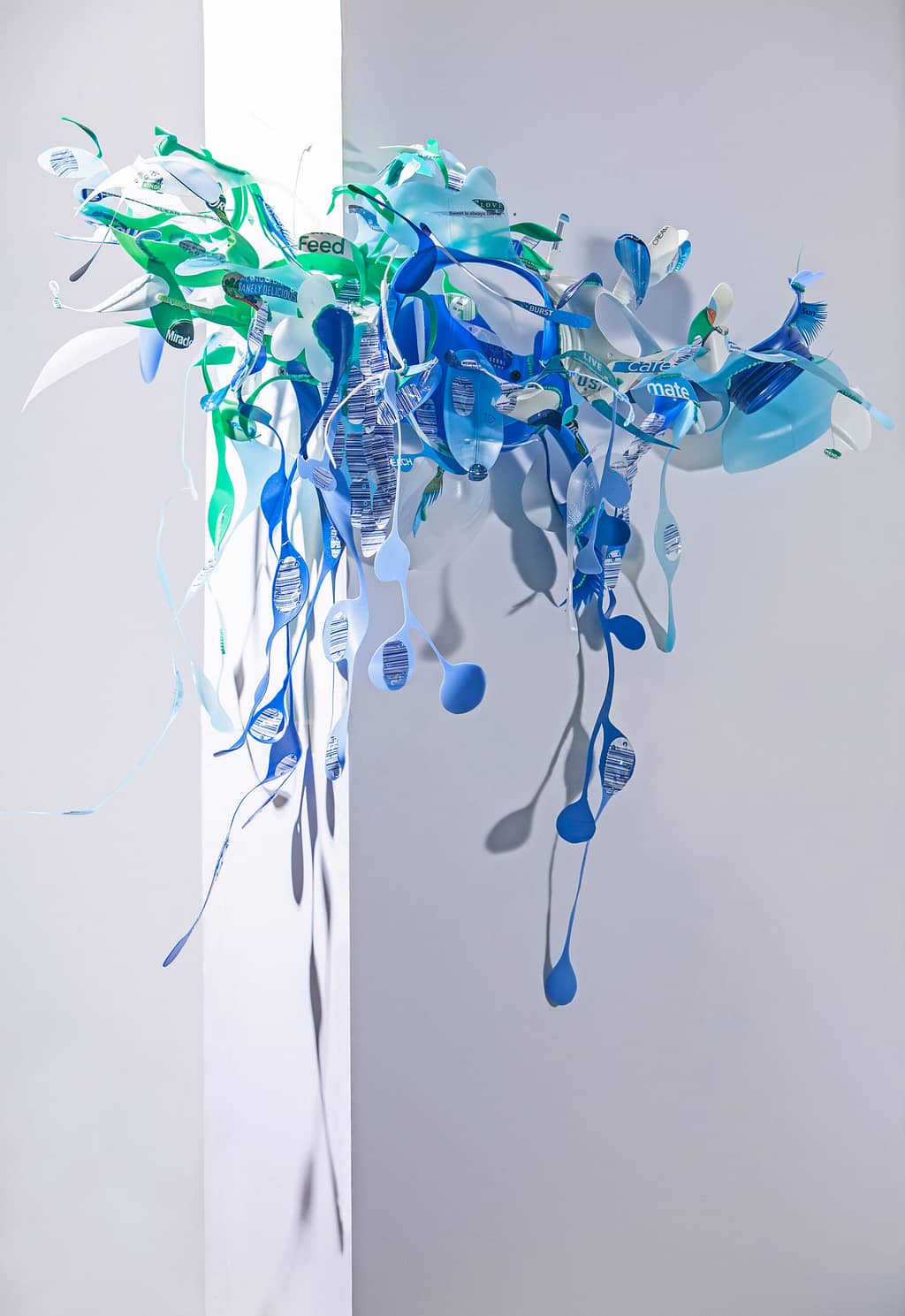Lily Kostrzewa speaks with Aurora Robson
Aurora Robson is a multi-media artist known predominantly for her meditative work intercepting the plastic waste stream. Her practice is about subjugating negativity and shifting trajectories. Her work is a formal meditation on recurring nightmares she had as a child which she hybridizes with forms found in nature. Robson was born in Toronto in 1972 and grew up in Hawaii. She lived and worked in New York City for over two decades during which time she studied art history and visual arts at Columbia University. Recently, Robson moved to the Hudson Valley to raise her two daughters with her husband Marshall Coles.

Courtesy of Hollis Taggart.
Because of my personal interest in female artists, I took the opportunity to interview the environmental artist Aurora Robson regarding her recent two-person exhibition at Hollis Taggart Gallery with her collaborator the late environmental realistic painter Idelle Weber (1932-2020). Aurora Robson uses mostly plastic waste debris as her main medium to create her artworks. For her, plastic waste materials’ effect on the environment is of crucial concern. This concern is evidenced by her powerful and often colorful artistic representations.
As a recipient of a National Endowment of the Arts grant, she worked at Penn State University to develop an exhibition with plastic waste debris. Her work there solidified in her what I call the four Rs – reduce, reuse, recycle, and rethink.
One might wonder what plastic waste debris has to do with fine art. Well, as it almost always happens, artistic representations are a most powerful form of education. For me, Aurora’s Creations are impactful yet attractive.
As I talked with her, I started with her making process. She first explained that color was important to her. People notice people are affected by color. Color in itself is a form of communication. As a result, she chooses waste material that naturally meets the color aspect she desires. Interestingly she mentioned she was impacted by a teacher who taught that butterflies have the ability to see many more colors than we humans.

Courtesy of Hollis Taggart.
I then turned to her hardware process. For Aurora whether it’s sewing, welding, printing, painting, or whatever does not matter. The thought process of how to best examine her subject matter in a meaningful way drives her. She joked that she was a “glorified janitor” in attempting to find just the right subject matter. Her natural tendency is to be so creative, so free, that there is no resistance to finding unusual, yet for her, appropriate material.
I next turned to the current exhibit at the Hollis Taggart. I noticed that Aurora’s work is much more abstract than collaborator Weber’s realistic food waste paintings. However, these two artists’ works certainly do not compete with one another but add a complete fullness to the exhibit. In fact, Aurora’s work in this exhibit is inspired by Weber and honors Weber by expanding in Aurora’s own way on the older artist’s theme.
Of particular interest to me was “Ding Dang”, Aurora’s two meter-sized sculpture hung from the ceiling of the front window at Hollis Taggart Gallery’s 521 West 26th location. Aurora explained the floating sculpture are made of pieces of plastic safety drums. Once broken, and often broken, they end up in landfills becoming long-term large environmental waste.
Aurora Robson loves the world. She wants to see people be aware of how the Earth is in no small trouble by the consumption of plastic consumer material. From her positive energy to create from plastic debris, she emphasizes recycling as a future for all. She creates her work by the marriage of culture and technology in order to change the way we see the world. Also, she sees herself as a creator giving her a new insight into herself as an artist. During the pandemic, people are slowing down and might have more time to think about personal responsibility to the Earth. I am grateful to see her new collection of collage work as well as those hanging sculptures. She uses each piece of her artwork to give emphasis to our consumption waste telling us now and for future generations the stories of our modern destructive tendencies.

Courtesy of Hollis Taggart.
To learn more about Aurora and her work, please visit www.AuroraRobson.com.

